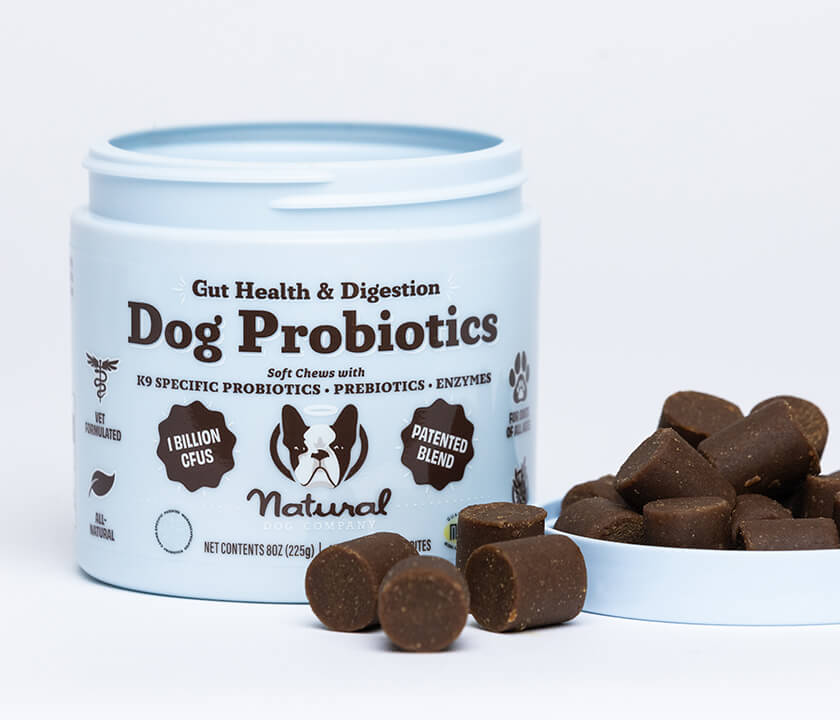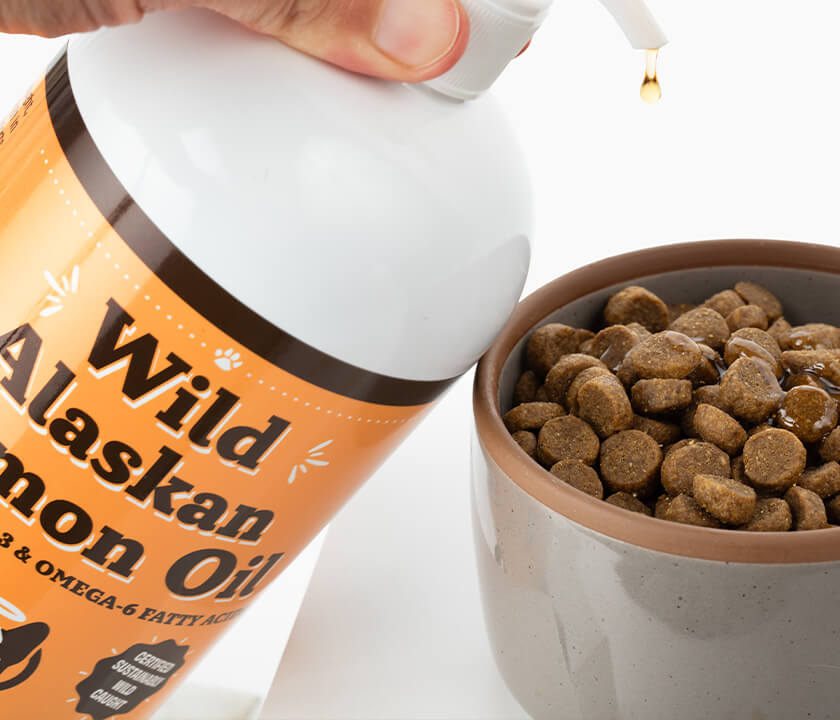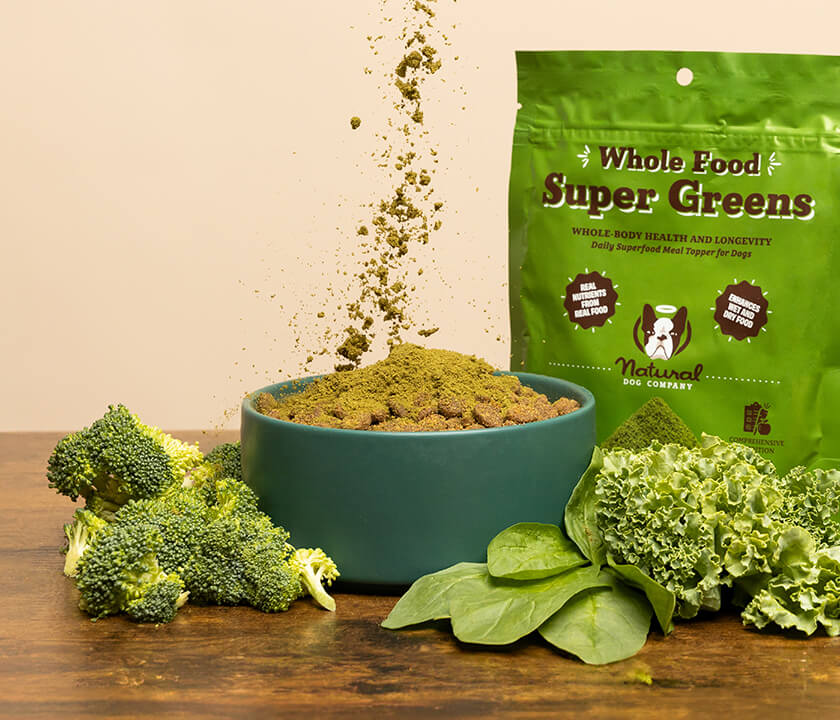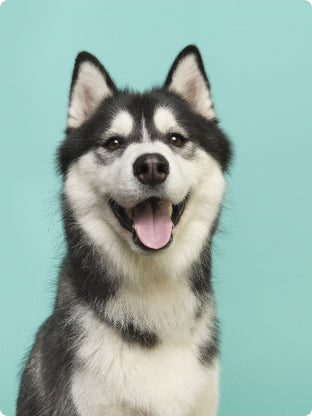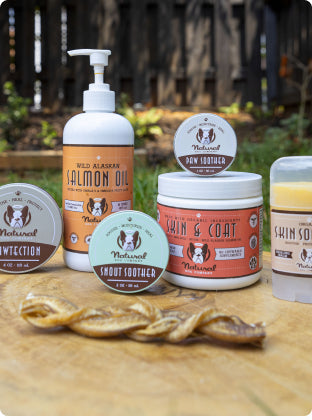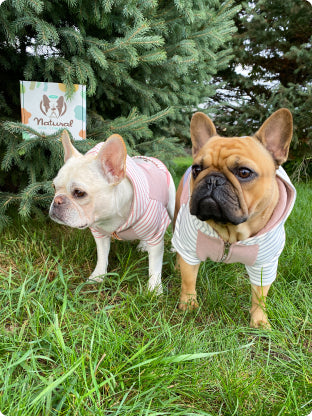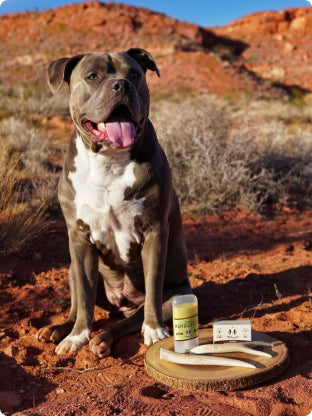Hot spots on dogs, also referred to as acute moist dermatitis, typically affect dogs’ heads, hips or chest area but there are really no boundaries. Hot spots can grow fast, going from bad to worse quicker than you can say—“Should I call the vet?”
The reason hot spots on dogs often go from a 2 to a 10 overnight is because of your dog’s unquenchable desire to scratch and bite at irritated skin. A small irritant can turn into a hot spot due to non-stop scratching.

Before
What Causes Hot Spots on Dogs?
Some of the most common reasons for hot spots include:
- Allergies or anything your dog encounters that irritate the skin and results in nonstop itching and chewing
- Insect, mite, or flea bites
- An underlying infection
- Stress and boredom, which can lead to chronic chewing and licking
- Poor grooming habits
Other things that can lead to hot spots are anal sac disease, hip dysplasia or anything that creates discomfort or pain and provokes licking/chewing.
3 Tips to Heal Hot Spots on Dogs
#1. Shave Affected Area
Shave your dog’s hair around the affected area. This allows the skin to breathe and makes it easier to apply medication. It also makes it easier for you to monitor the situation.
#2. Cleanse the Area
Use a non-irritating solution to clean the hot spot, such as Spruce Up Pup Shampoo made with all-natural soothing ingredients.
#3. Apply Skin Soother Several Times a Day

After
Skin Soother is the ultimate all-natural solution to hot spots on dogs. Each carefully sourced ingredient offers unique benefits that when used in combination offer superior soothing and healing qualities. Plus, Skin Soother is 100% non-toxic because, as us dog lovers most certainly know, dogs are sure to lick it more than once.
Skin Soother can be used on wounds, cuts, scrapes, and burns, as well as hot spots and yeast infections. It can also be used on interdigital cysts, irritated bug bites, post-surgical wounds, acne, rashes, and bacteria + fungal infections too!
So, what are you waiting for? Watch your dog experience faster recovery from hot spots with reduced symptoms thanks to Skin Soother’s soothing and healing properties.
Try Skin Soother
Risk free–100% money back guarantee!

#4. Add Essential Fatty Acids to Your Dog’s Diet
Essential fatty acids, like krill or fish oil supplements, improve skin and coat health. Additionally, the omega 3’s DHA and EPA offer documented benefits to your dog’s brain, organs, joints, and eyes.
If your dog’s hot spots are caused by a more serious underlying condition you may also need to treat hot spots with:
- Antibiotics and painkillers
- Medications to eliminate parasites
- If allergies are related to diet you may need to change your dog to a hypoallergenic food
What if Hot Spots on Dogs Are Not Getting Better?
If your dog’s hot spots are not getting better or appear to be getting worse, it’s important to visit your veterinarian. A skin swab or biopsy may be necessary to identify persistent bacteria. In some cases, an antibiotic is necessary to heal hot spots on dogs.
